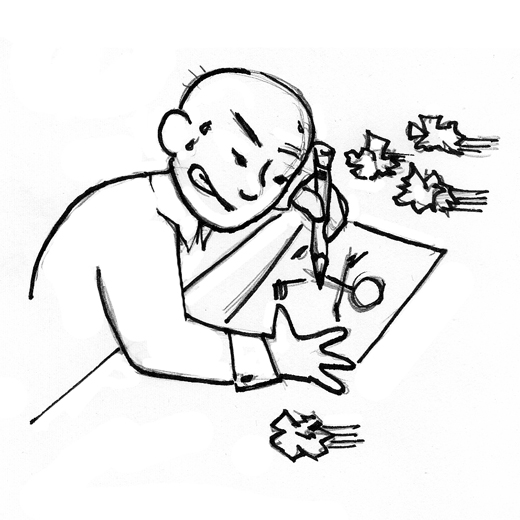So you want to be a graphic designer?

Believe it or not, the life of a graphic designer can be fun and rewarding. We tend to be creative people who get to work with other creative people, and that can make for a fun working environment. Most design agencies are pretty casual – not too many shirt and tie days in this business. Our work environment often reflects that same laid back creative attitude. Given all those perks, graphic design is still a job, and like any job there are going to be some pros and some cons. You will need to master a few skills to be successful. We meet a lot of people from all walks of life who are interested in becoming graphic designers. To them, we offer these points to ponder.
Why the heck do you want to become a designer? Seriously? It’s usually the first question we ask any intern or potential new hire. You better have a good answer, too. I guess we feel that to make a great designer you need to have a passion for art, advertising, marketing, creativity, and, oh, yeah – actual Graphic Design! You also need to have the right attitude because this business has deadlines and budgets. You need to collaborate with teams of people on projects and always remember, at the end of the day, this is a business. It’s not all just about creating pretty pictures and making things the way YOU like it. The projects you will work on are for companies who expect the work you create will make them money. This is fundamental to the job requirements. Are you willing to take that on?
So you thought it through and you still want to be a graphic designer, huh? Well, you better start taking some classes. But where do you start? We recommend a four-year degree. Yes, you can technically become a designer without any sort of formal education at all and make a living, but it’s not easy, nor the norm. Typically, agencies look for people who have a four-year degree as a minimum.
*Very Important: There’s more to design than just knowing how to operate a computer. Here’s a list of classes we recommend people take if they truly want to become a successful well-rounded designer.
- Art fundamentals such as drawing and painting
- 2d and 3d design
- Art History
- Typography
- English Composition (classes like creative writing or journalism)
- Web Design and Development
- Print Production
- Photography
- Communication
- Psychology or Sociology
- Some kind of basic Business or Management
Notice how we didn’t say anything about learning the design programs? Why? Most of your potential bosses are looking for someone who can think and learn. You need to have a strong core of fundamental knowledge that you can adapt to different situations. Yes, you need to know how to use the programs but Matt’s pretty convinced he could teach a 3-year-old Photoshop. We can teach you which buttons to mash, but we don’t have the time – nor the inclination – to train how your brain works. Being a graphic designer is more about the ability to understand color, balance, composition, typography, people’s motivations, the ability to make complete sentences and know the difference between your and you’re, and they’re, their and there. The ability to compose a photo, communicate with a team, manage a project, tell a story, solve a problem, and be responsible enough to all those things on time and under budget.
You say you have what it takes to be a designer? Do you have a thick skin and can take criticism? Are you able to use that feedback to make things better? Have you gone above and beyond the classroom? Have your reached out to alumni of your college and local agencies for for internships, advice and portfolio reviews? Have you connected with the design community online through blogs, dribbble, Twitter – or even in real life through meetups? Do you have your own website? Have you participated in design competitions and art shows or read design magazines and books? Are you familiar with the latest trends? Being a well rounded designer is about all of these things.
Well, maybe you’ve done all those things and maybe you haven’t. Every person is different and every designer is different. Those are the qualities 3thought looks for in a designer. We also look for things you can’t teach like a sense of style, creativity and a good eye. For us, it’s about passion, responsibility and the desire to soak up knowledge and understanding, and not just pump out a project because it looks pretty. It’s about being able to design and work smart while understanding the challenges and audience to create something that not only looks great, but functions just as well.
So, Design Professionals, what advice do you give aspiring designers? Do you agree or disagree with what we’ve said here? Have we left anything important out? We’d love to hear from designers and aspiring designers. Let us know what you think in the comment area below.
